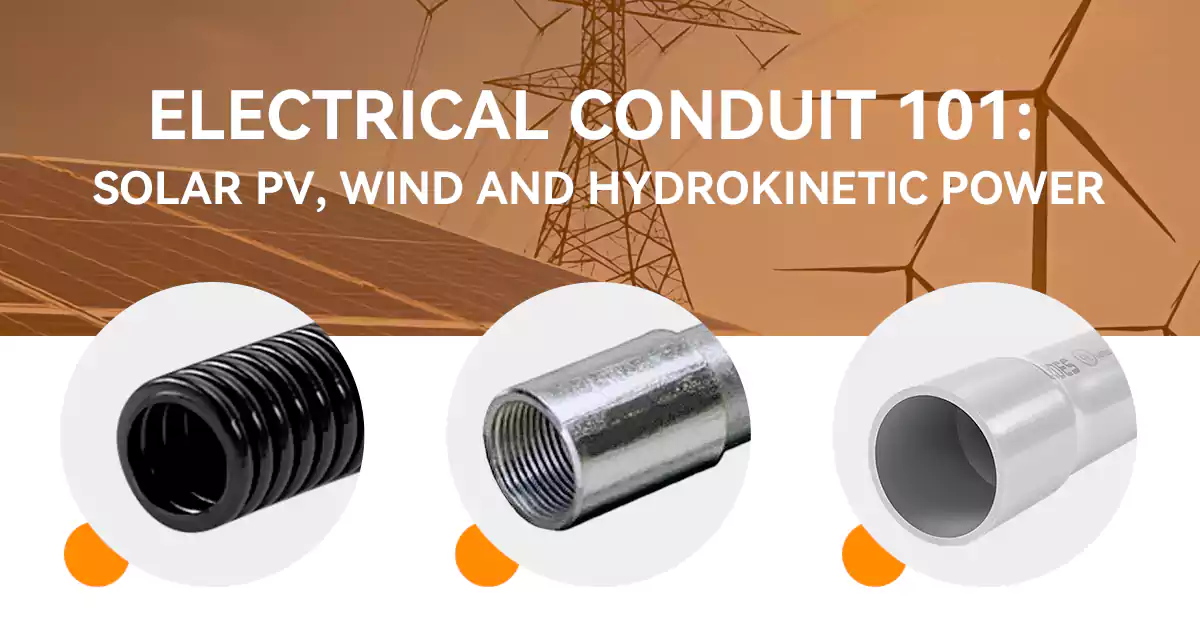
Table of Contents
As renewable energy systems continue to scale globally, robust and code-compliant electrical infrastructure becomes essential to ensure safe and efficient power delivery. Whether in a solar photovoltaic (PV) array, wind turbine farm, or hydrokinetic installation, one crucial yet often overlooked component is the electrical conduit system, the backbone that protects and routes conductors across harsh and varied environments.
Electrical conduits are not merely passive enclosures; they directly impact installation durability, environmental protection, maintenance accessibility, and regulatory compliance. Selecting the right conduit system is critical, especially in renewable energy projects where exposure to UV, moisture, temperature extremes, vibration, and even saltwater is common.
This guide offers a comprehensive overview of electrical conduit fundamentals tailored specifically for solar, wind, and hydrokinetic power systems. We’ll walk through conduit types, their appropriate use in new energy systems, and essential considerations for selecting conduit materials in the renewable energy context.
What Is Electrical Conduit?
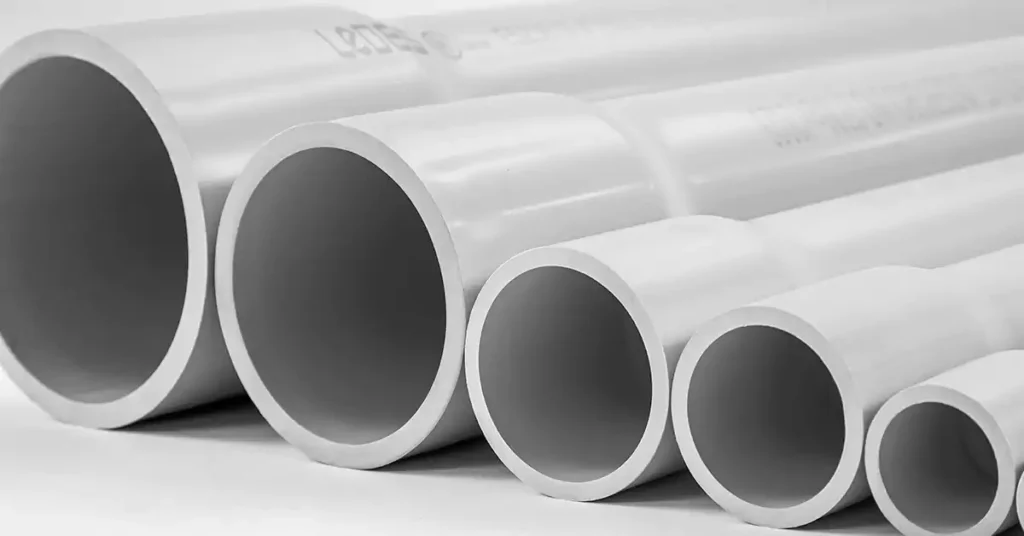
Electrical conduit is a tubing system designed to encase and protect electrical wiring from mechanical damage, moisture, corrosion, UV degradation, and fire. It ensures safety for both people and systems by maintaining the integrity of electrical circuits and reducing the risk of short circuits, arc faults, and physical exposure.
In renewable energy applications, electrical conduit serves critical functions in:
- Protecting cabling from environmental damage
- Ensuring compliance with NEC, CEC, and local codes
- Supporting structured, maintainable installations
- Facilitating safe routing across long distances, underground or overhead
8 Common Types of Electrical Conduit
Electrical conduits can be broadly classified into metallic and non-metallic types. Each has distinct characteristics suited to specific applications.
Conduit Type | Material | Common Applications | Key Features |
EMT | Steel (Galvanized) | Indoor commercial buildings, light industrial work, concealed ceilings and walls | Lightweight, easy to bend, not suitable for burial |
RMC | Thick Galvanized Steel | Exposed outdoor/high-impact areas | Extremely durable, corrosion-resistant, threaded ends |
IMC | Steel (Medium-wall) | Industrial and outdoor applications, lighter-duty than RMC | Lighter and cheaper than RMC, suitable for exposed use |
PVC | Rigid Polyvinyl Chloride | Residential, commercial, and utility—used both above and below ground | Corrosion-proof, non-metallic, Schedule 80 for strength |
ENT | Corrugated Plastic | Indoor wall cavities, dry locations (not for direct burial or exposed use) | Lightweight and flexible, snap-together fittings |
LFMC | Flexible Metal | Motors, pumps, rooftop HVAC, vibration-prone equipment | Flexible, water-resistant, suitable for wet locations |
FMC | Helical metal tubing | Dry indoor environments, equipment connections | Flexibility in tight spaces, not watertight |
HDPE | High-Density Polyethylene | Long underground conduit runs (directional boring, solar farms, telecom) | Flexible, watertight, ideal for trenchless installation |
Above-ground vs. Underground Conduit Applications
Electrical installation applications vary widely, and renewable energy projects often include a mix of above-ground and below-ground conduit runs, depending on the layout of solar panels, turbines, transformers, and grid connection points. Each environment places different mechanical, environmental, and regulatory demands on the conduit system.
Above-Ground Conduit
Above-ground conduit refers to any raceway exposed to open air, including those mounted on rooftops, solar racking systems, wind turbine towers, utility poles, or building exteriors.
Key considerations for above-ground use:
- UV Exposure: Sunlight can degrade non-UV-rated plastic, causing brittleness and cracking. Therefore, UV-stabilized or colored PVC (often gray, white, or orange) is required.
- Mechanical Protection: Falling tools, equipment, or weather (like hail or wind-driven debris) can impact conduit. Use Schedule 80 PVC or metallic conduit in high-risk areas.
- Corrosion Resistance: All exposed fittings and straps must be corrosion-resistant (e.g., stainless steel or coated metal).
Underground Conduit
Underground or direct buried conduit is common in solar PV farms, wind turbine fields, and hydropower installations where conductors must be routed across long distances with minimal surface disruption.
Key considerations for underground use:
- Moisture Sealing: Codes classify underground conduit as a “wet location.” Water ingress is assumed, so conductors must be rated for wet conditions.
- Mechanical Protection: Conduits are often encased in concrete or laid on sand beds to prevent damage from rocks or settling. Depth and backfill must conform to code.
- Continuity: Joints must be watertight or use direct-burial rated fittings to prevent cable degradation.
- Warning Tape: Plastic marker tape is often buried above the conduit to warn future excavators.
Above-ground vs. Underground Conduit Comparison Table
Application | Above-Ground | Underground |
Typical Exposure | Sunlight, rain, snow, physical impact (tools, animals, vehicles) | Soil, moisture, shifting loads, chemical exposure, physical backfill pressure |
Conduit Requirements | UV-stabilized, corrosion-resistant; high physical strength | Watertight seals; corrosion-resistant;high physical strength; cables rated for wet location |
Common Materials | Rigid PVC (UV-rated), EMT, IMC, RMC, LFMC | Rigid PVC (Schedule 40/80), HDPE ducts, RMC (limited), concrete-encased PVC |
Key Pitfalls | Conduit cracking due to UV; rusted straps or boxes; insufficient support | Leaking joints, crushed conduit from improper backfill, insufficient burial depth |
Three Renewable Energy Systems Overview
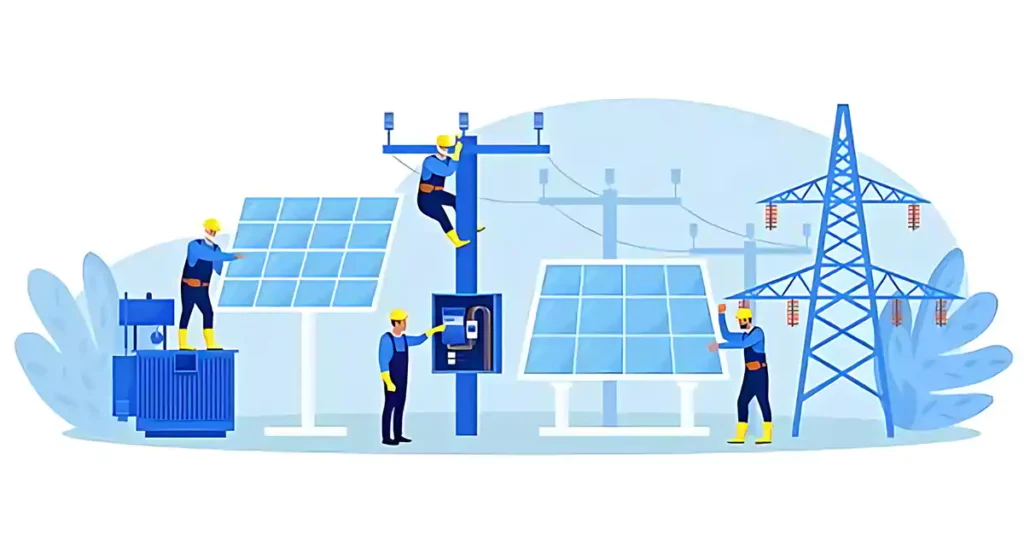
Electrical conduit design and selection can only be effective when grounded in a full understanding of the energy system it supports. Each renewable energy source, whether solar photovoltaic (PV), wind power, or hydrokinetic generation, has unique electrical and environmental demands that shape conduit choices.
What is a Solar PV System?
A solar photovoltaic (PV) system is a renewable energy system that converts sunlight directly into electricity using semiconductor technology. Unlike thermal solar systems that use sunlight to heat water or air, PV systems generate direct current (DC) electricity at the panel level, which is then converted into alternating current (AC) using inverters, making it usable for homes, businesses, or grid feeding.
A complete PV system consists of several integrated components:
Solar panels (modules) – capture solar energy and convert it to DC electricity.
Inverter(s) – convert DC to usable AC power.
Mounting structures – fix panels to rooftops, ground mounts, or trackers.
Solar conduit, cabling, and junction boxes – form the “nervous system” that connects and protects electrical pathways.
Monitoring systems and optional battery storage – track performance or store excess energy.
PV systems range from small residential rooftop setups to massive utility-scale solar farms, with growing interest in hybrid and floating solar applications.
Pro Tips: Want to learn more about solar conduit types, applications and electrical codes compliance? You can click the link above to view our expert guide.
Classifications of Solar PV Systems
Here are 3 classifications of solar PV systems:
System Type | Description |
Grid-Connected | Most common system type; connected to the public utility grid. Surplus power can be exported via net metering or feed-in tariffs. |
Off-Grid (Stand-Alone) | Operates independently from the grid; ideal for remote areas. Requires battery storage or generators to manage power during low-sun periods. |
PV Direct | A simplified system that directly powers devices (like pumps) when sunlight is available, without storage or grid connection. |
Solar PV Cell Technologies
Here are 3 different type of solar PV cell technologies,
Cell Type | Efficiency | Cost | Common Use |
Monocrystalline | High | Higher | Residential/commercial; space-saving needed |
Polycrystalline | Medium | Moderate | Utility-scale and budget-friendly projects |
Thin-Film | Lower | Lower | Flexible or integrated applications (e.g., BIPV) |
Advantages of Solar PV Systems
- Clean and Renewable
Solar energy produces no emissions during use and helps reduce reliance on fossil fuels. - Lower Electricity Bills
PV systems can significantly cut electricity costs and provide long-term savings. - Low Maintenance
With no moving parts, solar panels require minimal upkeep aside from periodic cleaning. - Grid Support & Backup Options
Grid-connected systems allow net metering, while battery-equipped systems offer outage protection. - Increased Property Value
Homes with solar panels may see higher resale value due to energy savings and sustainability. - Performance in Diverse Climates
Modern panels work even in cloudy or snowy environments, though efficiency drops under low light. - Government Incentives
Tax credits, rebates, and solar renewable energy certificates (SRECs) enhance financial returns.
Disadvantages of Solar PV Systems
- High Upfront Cost
Installation costs can be significant without incentives or financing support. - Weather Dependence
Energy output is lower during cloudy days or at night unless storage is available. - Space Requirements
Rooftop or land area is needed to meet full energy demand. - Storage Adds Complexity and Cost
Battery systems remain expensive and have shorter lifespans than panels. - Manufacturing Impacts
Panel and battery production involves energy-intensive processes and resource extraction.
Electrical Conduit Role in Solar PV Systems
In both residential and utility-scale PV systems, electrical conduit plays a critical role in protecting the wiring infrastructure. It routes DC cables from:
PV modules to combiner boxes
Combiner boxes to inverters
Inverters to distribution boards or transformers
Conduit must meet the following demands:
UV Resistance: All exposed aboveground conduits must be UV-stabilized, especially on rooftops and trackers.
Water Protection: Underground conduits must be watertight, as NEC 300.5 considers them “wet locations.”
Mechanical Strength: Areas prone to impact (e.g., parking lots or walkways) require Schedule 80 PVC or metallic options.
Code Compliance: Related codes such as NEC Article 690 outlines key PV installation standards, including conduit fill, support spacing, and labeling etc to ensure the safety of the system.
What is Wind Power?

Wind power is a form of renewable energy that converts the kinetic energy of moving air into electrical energy using wind turbines. Historically used for grinding grain or pumping water, wind power today is almost entirely utilized for electricity generation, with modern wind farms supplying power to homes, industries, and national grids. As of 2024, wind generated over 2,400 terawatt-hours (TWh) of electricity worldwide, representing over 8% of global electricity supply.
Wind energy is considered sustainable, low-emission, and highly scalable. Its growth has been rapid, especially in countries like China and the United States. However, because wind is a variable energy source, it is often integrated with energy storage or combined with solar PV systems to maintain supply reliability.
How Wind Turbines Generate Electricity
A modern wind turbine functions through a straightforward yet highly engineered process:
- Wind turns the blades, which are connected to a central rotor.
- The rotor spins a shaft inside the nacelle (the housing at the top of the tower).
- The shaft is connected to a generator, which converts rotational energy into electrical energy.
- Electricity flows through step-up transformers, then through cables and conduit to the transmission grid or local use.
3 Different Types of Wind Power Systems
Here are 3 different types of wind power systems,
System Type | Description | Advantages | Challenges |
Onshore Wind | Installed on land, often in rural or agricultural zones | Easier installation, lower cost | Noise, land use, visual impact |
Offshore Wind | Built in seas or oceans where wind is stronger and more consistent | Higher output, less visual disturbance | Higher construction/maintenance cost, marine challenges |
Hybrid Wind Systems | Combines wind with solar or batteries for increased reliability | Enhanced stability, good for remote areas | Requires integration of multiple technologies |
Core Components of Wind Power Systems
- Wind Turbines
The primary energy-capturing device, consisting of blades, rotor, nacelle, and tower. The size and design of turbines significantly influence performance. - Electrical Infrastructure
Includes generators, cabling, transformers, and electrical conduit systems. These components route electricity from the turbine to the point of use or the grid. Electrical conduit is critical for protecting conductors from weather, vibration, corrosion, and mechanical damage, especially in tower risers, foundations, and collector systems. - Control Systems
Turbines use onboard control units to optimize orientation, blade pitch, and speed, ensuring safety and maximum energy capture in changing wind conditions.
Advantages of Wind Energy
- Clean and Renewable: Wind is a naturally replenished energy source with no emissions during operation.
- Cost-Effective: Onshore wind is one of the lowest-cost sources of new electricity globally.
- Local Economic Benefit: Wind projects contribute to rural economies through land lease payments and tax revenues.
- Job Creation: The wind sector supports nearly 150,000 U.S. jobs and is among the fastest-growing employment sectors.
- Energy Security: Reduces dependence on fossil fuels and helps stabilize long-term energy prices.
Challenges of Wind Energy
- Noise and Visual Impact: Wind farms may be met with resistance from communities due to their visual presence and low-level turbine noise.
- Grid Integration: Wind is intermittent, requiring grid upgrades or energy storage to ensure reliability.
- Wildlife Concerns: Poorly sited turbines can impact birds and bats; ongoing research and improved siting aim to mitigate this.
- Infrastructure Cost: Offshore and remote projects require significant investment in foundations, conduits, and transmission.
Conduit Applications in Wind Power Systems
Electrical conduit plays a pivotal role in both onshore and offshore wind installations:
Tower Internals: Inside each turbine tower, conduits protect control wiring and power cables from vibration, condensation, and mechanical stress.
Foundation Risers: For underground-to-tower connections, PVC-coated RMC, HDPE ducts, or galvanized steel conduit are used to ensure corrosion resistance and watertight integrity.
Collector Circuits: Underground conduit networks link turbines to a central substation, often using Schedule 40 PVC conduit or HDPE conduit for durability and ease of pulling long runs.
Offshore Applications: Use marine-grade metallic conduit or corrosion-resistant plastic conduit, sealed against salt spray and water ingress.
What is Hydrokinetic Power?
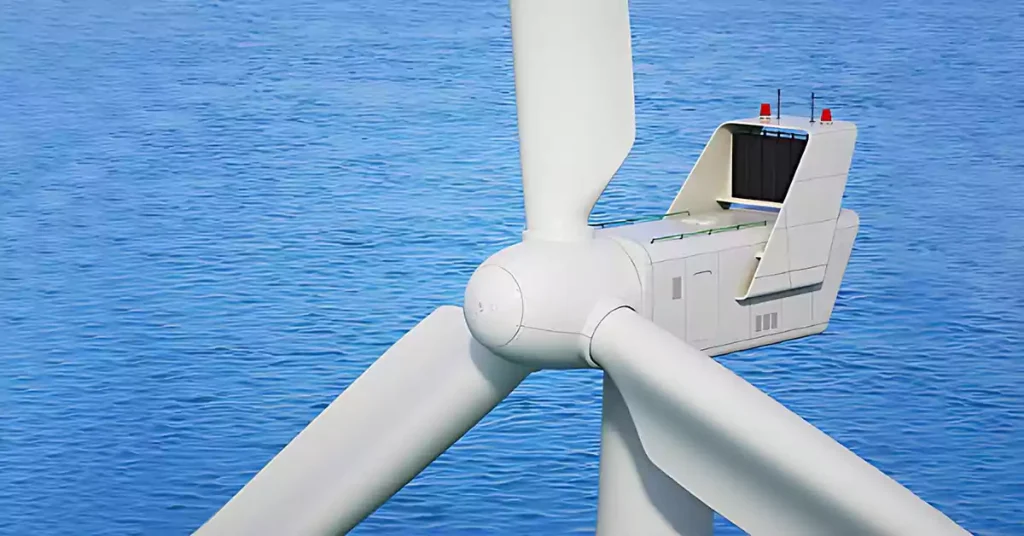
Hydrokinetic power refers to the generation of electricity from the kinetic energy of naturally moving water, without the need for dams or reservoirs. This includes free-flowing rivers, ocean currents, tides, and waves. Unlike traditional hydropower (which relies on stored water behind dams), hydrokinetic energy taps into the motion of water bodies directly, making it a low-impact, renewable solution for electricity generation.
With water being over 800 times denser than air, hydrokinetic systems can harness significant energy even from slow-moving streams, offering enormous potential. Studies estimate that U.S. hydrokinetic resources could power over 67 million homes, especially as technologies mature and deployment scales.
4 Different Types of Hydrokinetic Energy Sources
Hydrokinetic systems can be grouped based on their source environment and method of capturing energy:
- In-Stream Hydrokinetic Systems
These systems generate electricity from the horizontal flow of rivers, canals, and man-made waterways. Installed devices may float, submerge, or be attached to existing infrastructure such as bridges. Common turbine types include:
Horizontal-axis turbines: Similar in design to wind turbines; may include a duct to concentrate flow.
Vertical-axis turbines: Axis is perpendicular to flow, sometimes ducted.
Helical turbines: Resemble screws or augers for multidirectional flow.
These systems are especially useful in areas with consistent current but without the feasibility or environmental acceptance of dams.
- Tidal Energy Systems
Tidal systems capture power from predictable tidal currents, using:
Barrage systems (dam-like structures across estuaries)
Tidal stream generators (underwater turbines anchored to the seafloor)
Modern tidal systems often resemble submerged wind turbines and can be fixed to the seabed, tethered with cables, or mounted on floating structures. Areas like Alaska, the Pacific Northwest, and the Northeast U.S. have strong tidal energy potential.
- Wave Energy Systems
Waves generated by ocean winds provide powerful, concentrated energy. Various technologies convert wave motion into electricity:
Point Absorbers: Floating devices that move with the waves to generate hydraulic or electric energy.
Attenuators: Long, jointed structures aligned with wave direction; wave-induced flexing drives a generator.
Oscillating Water Columns: Air is compressed by rising and falling water, driving a turbine.
Overtopping Devices: Waves fill an elevated reservoir, and the returning water spins turbines.
Wave energy is promising along the Pacific Coast of the U.S., where wave strength is greatest.
- Ocean Current Energy
Ocean currents such as the Gulf Stream carry massive amounts of kinetic energy. Devices deployed in these currents operate similarly to tidal stream turbines and can deliver consistent, base-load power due to the predictability and continuous flow of these underwater “rivers.”
Hydrokinetic Energy Conversion Technologies
Here are two common hydro energy conversion ways:
Technology | Source | Examples |
Rotational Devices | River/tidal/current | Horizontal/vertical axis turbines; water kites |
Wave Energy Converters (WECs) | Ocean waves | Point absorbers, attenuators, oscillating water columns, overtopping devices |
Advantages of Hydrokinetic Energy
Abundant & Predictable: Ocean and river flows are more consistent and predictable than wind or sunlight.
24/7 Power Potential: Unlike solar and wind, some water movements continue day and night, offering steady output.
Low Emissions: Generates power without burning fuel—no greenhouse gases or air pollution.
Scalable & Decentralized: Systems can be tailored to remote, coastal, or river communities without large infrastructure.
Complementary to Other Renewables: Ideal in hybrid configurations with solar or wind for balancing variable output.
Challenges and Environmental Considerations
While hydrokinetic systems are environmentally friendly in operation, they can pose unique ecological challenges:
Impact on Aquatic Life: Underwater turbines may disrupt fish migration, harm benthic habitats, or create noise.
Sediment Disruption: In-stream devices can alter sediment transport, affecting water quality and habitats.
Visual and Navigational Interference: Some surface wave devices may pose risks to vessels or seabirds.
Infrastructure Costs: Offshore deployment and underwater cabling require specialized construction and maintenance.
Electrical Conduit Applications in Hydrokinetic Installations
Electrical conduit plays a crucial role in protecting and routing power cables from submerged devices to the grid:
Underwater Cabling: Requires watertight, corrosion-resistant conduit, such as HDPE, PVC conduit or specialized marine-grade materials.
Shore Transitions: Conduits must withstand tidal variation, wave impact, and salt exposure, often requiring sealed, direct burial conduit with junction access enclosures.
Floating Systems: Flexible conduit may be used on floating wave or tidal devices to accommodate motion while maintaining cable integrity.
In-River Installations: Rigid nonmetallic conduit (RNC) or armored conduit is used for submerged routing along beds or bridges.
Why Conduit Matters in Renewable Energy Systems
As solar PV, wind, and hydrokinetic power systems gain momentum across the globe, the spotlight often shines on the turbines, panels, and generation equipment. However, electrical conduit systems, though less visible, are equally vital. They form the protective, connective tissue of renewable infrastructure, ensuring power travels safely and reliably from source to grid.
Tips: As a professional electrical conduit manufacturer, Ledes supplies customized solutions for the new energy industry, helping customers to install quickly and comply with local electrical codes. Contact our experts now to get a quote!
1. Protection in Harsh and Dynamic Environments
Renewable energy systems are often exposed to challenging environmental conditions:
- Solar farms endure high UV exposure, extreme temperatures, and physical impact from wind-blown debris or hail.
- Wind turbines face intense mechanical vibration, lightning, and remote terrain exposure, sometimes offshore.
- Hydrokinetic systems are submerged in corrosive, debris-laden, or sediment-rich water bodies, requiring absolute sealing and mechanical protection.
In all cases, conduit shields electrical wiring from:
Moisture and water intrusion (especially critical in marine and tidal zones)
UV degradation
Corrosion and salt spray
Rodents, insects, and mechanical damage
Ground movement, vibration, or high winds
2. Safety and Code Compliance
Electrical codes such as the NEC (National Electrical Code) and CEC (Canadian Electrical Code) mandate conduit use to meet grounding, fire safety, and insulation standards:
- Proper grounding: Metallic conduits can serve as a ground path; nonmetallic conduits must contain a separate equipment grounding conductor.
- Fire containment: In battery banks or inverter areas, flame-retardant conduit like LSZH prevents fire propagation.
- Segregation of circuits: Conduits help maintain clear separation between AC and DC circuits, high and low voltage systems, or signal lines and power lines.
Conduits are especially important in PV systems, where unprotected DC wiring can pose serious arc-fault and fire risks if not properly routed and shielded. Similarly, wind turbine wiring, subject to long vertical runs inside the tower, must be secured within conduit to protect against heat, electromagnetic interference (EMI), and cable fatigue from rotor movement.
3. Longevity and Reduced Maintenance
Renewable installations are built with long-term returns in mind—typically with 20 to 30-year lifespans. Poor cable protection can undermine that:
UV exposure can degrade cable jackets prematurely in solar farms.
Rodent or insect damage can breach cable insulation in remote wind sites.
Water intrusion in hydro systems can corrode or short electrical connections, causing safety hazards and expensive repairs.
Conduit extends the lifespan of wiring, reduces unscheduled outages, and minimizes maintenance costs. It also simplifies future repairs or upgrades, especially in underground or underwater installations where cable replacement without conduit would be invasive and costly.
4. System Modularity and Scalability
Renewable energy is increasingly deployed in modular, distributed systems—from residential rooftops to utility-scale hybrid plants. Conduit makes systems easier to scale or reconfigure by enabling:
Clean separation and identification of circuits
Easier pulling of new cables in existing infrastructure
Adaptability to integrate new technologies (like EV charging or energy storage)
For example, a solar + storage microgrid may require different conduit types for:
PV panel wiring (UV-resistant surface conduit)
Battery bank cabling (fire-rated conduit)
Inverter to grid connections (rigid conduit in underground raceways)
Using the right conduit from the start supports future flexibility – essential in a fast-evolving energy landscape.
Code Requirements for Renewable Energy Systems
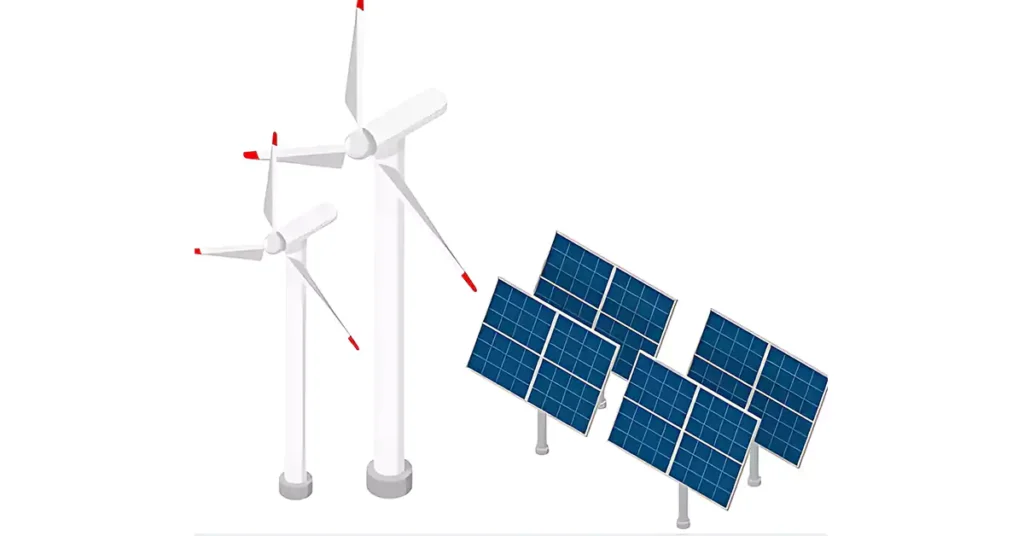
NEC: U.S. Code Requirements
The National Electrical Code (NEC) – a critical standard adopted across the United States—provides the foundation for safe, compliant design and installation of electrical systems, including solar photovoltaic (PV) and wind turbine systems. For renewable energy systems, conduit is not just about routing wires; it’s essential to protect, ground, segregate, and support the performance and safety of DC and AC circuits under real-world operating conditions.
Solar PV Systems - NEC Article 690
Article 690 governs the installation of solar PV systems. It includes extensive detail on wiring methods, system voltage, overcurrent protection, and grounding – all areas where conduit selection and usage is critical.
1. Wiring Methods
- All NEC-approved raceways and wiring systems are allowed, including PVC, EMT, RMC, MC cable, and flexible conduit, if listed for PV use.
- For voltages above 30V in accessible areas, conductors must be enclosed in raceways or guarded.
- PV conductors inside buildings must be run in metal raceways or MC cable from the building entry to the first disconnect.
- Flexible conduit (FMC) must be protected from physical damage and properly supported when exposed.
2. Separation and Identification
PV circuits must be segregated from other building wiring systems unless separated by partitions.
Conductors should be clearly identified and grouped, either by color coding or tags.
3. Labeling
Conduit carrying PV circuits must be marked every 10 feet with “WARNING: PHOTOVOLTAIC POWER SOURCE” in red with white letters.
4. System Voltage
Maximum voltage is calculated by temperature-corrected open-circuit voltage (Voc).
Proper conduit material must match the rated voltage and expected ambient temperatures (e.g., >70°C on rooftops).
5. Grounding and Bonding
Metallic conduits (EMT, RMC) must be bonded and can be used as equipment grounding conductors (EGCs).
Grounded PV systems must include dc ground-fault protection (690.5) with automatic circuit isolation.
6. Overcurrent Protection
Overcurrent protection is mandatory in source circuits, output circuits, and inverter outputs, with device ratings ≥125% of max current.
Conduit must allow proper access to fuses or breakers, even if not readily accessible.
7. Rapid Shutdown
Conduit supports circuit segmentation for emergency responders. Building-integrated systems need fast shutdown capability within conduit pathways.
Wind Energy Systems - NEC Article 694
Article 694 addresses small wind electric systems, defining specific conduit and wiring requirements for turbine outputs, inverter interconnections, and battery storage circuits.
1. Wiring Methods
All NEC-compliant wiring methods are permitted.
Turbine output circuits >30V in accessible areas must be enclosed in raceways (e.g., EMT, RMC, or PVC).
DC turbine output conductors inside buildings must be routed in metal raceways, MC cable, or metal enclosures from entry point to disconnect (694.30(C)).
2. Flexible Cables for Moving Parts
Used for nacelle-to-mast connections, these cables must be:
Sunlight-resistant, waterproof, extra-hard usage-rated
Terminated with approved lugs or connectors
3. Overcurrent Protection
Circuits require protection per Article 240.
Currents in wind systems are considered continuous, so 125% ampacity rating applies to both conduit fill and OCPD sizing.
4. Shutdown and Disconnection
Wind systems require manual shutdown mechanisms and grouped disconnects.
Conduits must support access to these points and provide protection during isolation or shorting operations.
5. Equipment and Tower Grounding
All metallic towers, nacelles, and enclosures must be bonded and grounded per Article 250.
If metallic conduit is used (EMT, RMC), it contributes to the grounding path, simplifying tower bonding requirements.
Galvanic compatibility matters—use galvanized electrodes when grounding near galvanized steel structures.
Notes: You can learn more about electrical conduit codes in our expert guide to NEC codes.
CEC Requirements for Renewable Energy Systems
The Canadian Electrical Code (CEC), specifically Section 64, outlines comprehensive requirements for renewable energy systems, including photovoltaic (PV) and wind electric systems. Below is a simplified and practical summary of the key provisions.
Solar Photovoltaic (PV) Systems
1. Voltage Limits & Calculation:
PV system voltage is calculated at 125% of the module’s open-circuit voltage. For dwellings, systems up to 600 Vdc are allowed; for commercial use, up to 1500 Vdc if restricted to qualified personnel and properly labelled.
2. Wiring & Conduits:
Conductors between modules may use flexible cords or specific solar cables (e.g., RPVU), but inside buildings they must be run in metallic raceways or metal-sheathed cable.
3. Arc-Fault & Rapid Shutdown:
Systems above 80 Vdc require arc-fault protection; rooftop PV arrays must shut down to 30 V within 30 seconds in an emergency.
4. Overcurrent Protection:
Devices must be rated to interrupt short-circuit currents from connected sources and be grouped where practical.
5. Bonding & Labelling:
All module frames must be bonded, and shutdown labels are required near the meter and inverter.
Small Wind Energy Systems (Rules 64-300 to 64-312)
1. Voltage and Circuit Ratings
Turbines connected to single dwellings can operate up to 600 V.
Circuits exceeding 150 V to ground must be accessible only by qualified personnel.
Conductors must be rated for 125% of generator current and 90°C temperature.
2. Wiring Methods
Conductors in raceways must be suitable for wet locations.
Exterior cables must use rigid or flexible liquid-tight conduit, MI cable, or armored cable for wet exposure.
Cables inside towers may use flexible cords or armoured cables but must be properly supported and mechanically protected within 2.5 m of accessible locations.
3. Overcurrent Protection
Required on each ungrounded conductor, not exceeding 125% of the generator current.
Exemptions exist for small systems under 12 A or if circuit ampacity exceeds total current from all sources.
Protection must be accessible and consider multiple sources.
4. Disconnecting Means
Required in each load circuit unless used for turbine speed regulation.
Must be lockable, rated at 125% of generator current, and located within 9 m of the turbine or at the base.
Disconnects must isolate equipment from all ungrounded conductors.
5. Grounding and Bonding
Metallic towers and enclosures must be bonded to ground using at least No. 6 AWG.
Grounding electrodes must comply with Section 10.
Guy wires are exempt from grounding unless structurally connected.
Large Wind Energy Systems (Rules 64-400 to 64-412)
1. Marking
Tower base must be permanently marked with system ratings, short-circuit values, and a warning diagram per Rule 84-030.
Labels for arc flash and shock hazards must be installed and updated as per field assessments.
2. Overcurrent Protection & Disconnecting Means
Disconnect must be at the tower base and rated for 125% of the generator current.
A single disconnect can serve multiple transformers if interlocked.
Disconnecting means must be labelled clearly.
3. Grounding and Lightning Protection
Towers must be grounded with No. 2/0 AWG bare copper conductor.
All grounding electrodes must be interconnected.
Lightning protection systems must be bonded to the turbine grounding system.
Micro-Hydropower Systems
1. Marking:
Permanent marking must be located at the disconnecting means.
It should include system description, rated power, and ballast load voltage/current.
2. Wiring:
Conductors must have ampacity ≥ 125% of the system’s rated current and temperature rating ≥ 90 °C.
Wiring methods must comply with Section 12 and Section 22 for wet environments.
3. Overcurrent Protection:
Not required if short-circuit current < conductor rating.
Each ungrounded conductor must be protected ≤ 125% of rated current (or 15 A if ≤ 12 A).
4. Disconnecting Means:
Clearly labelled as “Micro-Hydropower Generator System Disconnect.”
5. Stand-Alone Systems:
Governors must match capacity.
Diversion load = 100% of governor rating.
Battery-based systems must comply with Rules 64-800 to 64-814.
6. Grounding and Bonding:
Structures must be bonded with minimum No. 6 AWG conductor.
Hydrokinetic Power Systems
1. Wiring & Conductors:
Conductors sized to ≥ 125% of rated current.
Consider skin effect, non-unity power factors, and allow up to 10% voltage drop.
2. Overcurrent Protection:
Not required if short-circuit current is low.
Devices must be frequency-rated and set ≤ 125% of generator current (or 15 A if ≤ 12 A).
3. Wiring Methods:
Conductors must suit wet locations and be mechanically protected if run in flow channels.
4. Grounding:
As with other systems, metallic parts must be grounded, and disconnects must be labelled appropriately.
Why These Rules Matter
CEC Section 64 is more than just a set of guidelines — it’s the safety backbone for renewable energy systems in Canada. Whether you’re wiring a farm’s solar array, installing a wind turbine on a tower, or connecting micro-hydro to a battery bank, these rules:
- Prevent fire hazards through proper overcurrent protection;
- Ensure safe maintenance and shutdown with mandatory disconnects and labelling;
- Protect personnel by enforcing insulation, grounding, and arc-fault safety;
- Ensure long-term system performance by addressing voltage drop, wiring durability, and mechanical protection.
Pro Tips: Are you an electrical engineer or an electrical contractor? You can read our last post to learn more about the Canadian Electrical Code 2025, which will benefit your electrical installation and electrical project implementation.
AS/NZS Code Requirements for Renewable Energy Systems
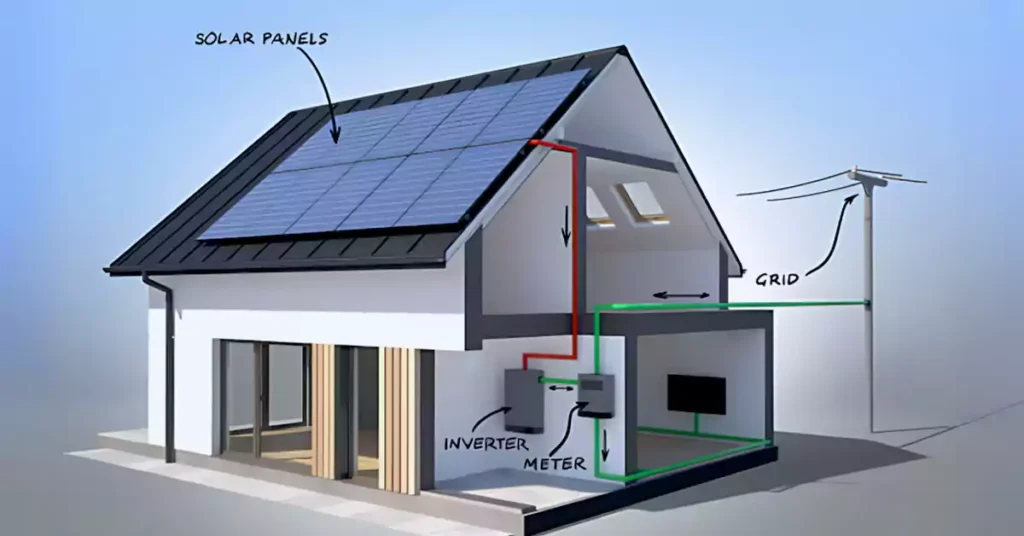
In Australia and New Zealand, the installation of electrical systems—including those for renewable energy – must comply with a combination of interrelated standards. These standards ensure electrical safety, mechanical durability, system reliability, and compliance with national regulations. When it comes to these renewable energy systems we mentioned, three related key standards come into play:
- AS/NZS 3000 (Wiring Rules)
- AS/NZS 5033 (Solar PV Installations)
- AS/NZS 1170.2 (Wind Actions)
AS/NZS 3000 – Wiring Rules (The Foundation Standard)
Often referred to as the “Wiring Rules,” AS/NZS 3000 is the foundational standard that governs all electrical installations across Australia and New Zealand. It outlines general safety, wiring methods, protection, and cable support requirements, which apply to both conventional and renewable energy systems.
Tips: Interested in AS/NZS 3000 – Wiring Rules? Click on the link above to read the ASNZS 3000 Expert Guide for more professional electrical conduit installation tips.
AS/NZS 5033 – Installation and Safety for Solar PV Systems
This standard specifically targets photovoltaic systems, complementing AS/NZS 3000 with more detailed technical requirements for DC circuits, string configurations, and cable protection.
Conduit-Related and Installation Requirements:
DC Conduit Protection: Since solar PV systems generate high-voltage DC, AS/NZS 5033 stresses the use of flame-retardant, UV-stable conduits to house DC cabling—especially when exposed or run through combustible materials.
Conduit Marking: PV conduit must be clearly labelled (e.g., “SOLAR DC”) at regular intervals for identification during maintenance or emergency access.
Mechanical Protection: DC cabling must be either double-insulated or run in heavy-duty conduits in areas with potential for mechanical impact (e.g., rooftops, exposed walls).
Cable Routing: The standard requires that all DC cabling be routed to minimize length, avoid loop areas (to reduce induced voltages), and protect against heat accumulation—affecting conduit layout and ventilation needs.
AS/NZS 1170.2 – Structural Design: Wind Actions
While not an electrical standard, AS/NZS 1170.2 plays a crucial role in wind and solar installations by defining the structural design parameters for equipment exposed to wind loads.
Relevance to Conduit Systems:
Conduit Fixing and Anchorage: Wind load calculations influence how conduits are mounted on structures like solar panel arrays, wind turbine towers, or trestles. Poorly fixed conduits can detach during storms, leading to damage or electrical hazards.
Wind Zone Ratings: Installation designs—including conduit layout and support—must account for regional wind speeds and turbulence, especially in coastal or elevated areas.
Best Practices for Installation and Maintenance
Installing electrical conduit for solar PV, wind, and hydrokinetic systems is not just about running pipe and pulling wire — it’s about ensuring long-term system performance, safety, and code compliance. Whether you’re working under the NEC in the U.S., the CEC in Canada, or the AS/NZS Wiring Rules in Australia and New Zealand, the fundamentals of good conduit installation remain consistent. This section outlines essential planning, installation, and maintenance practices for renewable energy conduit systems.
1. Planning and Design
Layout First, Tools Later
Before any tools are picked up, a detailed plan of the entire conduit path should be created. This includes mapping out the location of PV panels, inverters, wind turbine towers, hydro units, junction boxes, and electrical enclosures. A good design minimizes unnecessary bends, keeps wire runs short, and ensures conduit avoids physical hazards or inaccessible areas.
Comply with the Codes
Each region has its own electrical code, but all emphasize safety, proper materials, and environmental protection.
Working with local inspectors or the Authority Having Jurisdiction (AHJ) ensures early identification of any compliance gaps.
Choose the Right Material
Conduit selection depends on location, exposure, and load. UV-resistant PVC is common for rooftops. Rigid metal may be required in high-impact zones. Underground runs often use heavy-duty PVC or HDPE, and must be watertight. Choosing the right conduit for the right environment prevents early failures and reduces maintenance.
2. Installation Techniques
Use the Proper Tools
Good installation begins with using the correct tools: pipe benders for smooth curves, cutters for clean edges, fish tape for wire pulling, and deburring tools to prevent cable damage. Sharp edges or poorly fitted conduit can quickly ruin an otherwise well-designed system.
Limit Bends and Lengths
Most codes recommend no more than 360° of total bends (i.e., four 90° bends) between pull points to prevent excessive pulling tension. When bends are necessary, larger-radius sweeps help reduce wire stress. Adding junction boxes at strategic points simplifies installation and future maintenance.
Support Conduit Securely
Loose conduit can sag, shift, or break. NEC, CEC, and AS/NZS all require conduits to be supported at regular intervals, typically within 3 feet (1 meter) of each junction or box, and every 10 feet (3 meters) for straight runs (varies slightly by material and code). Outdoor supports must also resist corrosion.
Wire Pulling Best Practices
Wire pulling is a team effort. For long or complex runs:
Use lubricant to reduce friction and avoid conductor damage.
Inspect the conduit beforehand for debris or sharp edges.
Apply even tension to avoid overstretching or jamming cables.
Follow code-based fill ratios to prevent overheating and ensure airflow.
Cable Separation Requirements
Maintaining adequate separation between different circuit types is essential:
AC and DC cables must not be bundled together unless specifically rated for it and adequately shielded.
Power cables and signal/control cables should be run in separate conduits to prevent electromagnetic interference.
In multi-circuit conduit runs, dividers or dedicated conduit paths are preferred.
Conduit Support and Fixing
Proper mechanical support is vital for conduit longevity and code compliance:
Conduits must be securely mounted with spacings defined by material type and code requirements.
Supports must resist wind load, vibration, and thermal expansion, particularly for long rooftop solar runs or wind turbine towers.
Use of UV-resistant clips and saddles is recommended in outdoor environments.
Seal All Connections
Any opening in your conduit system is an invitation for moisture. Especially for buried or outdoor systems, all fittings, joints, and transitions must be properly sealed.
3. Long-Term System Integrity
Installation doesn’t end when the wires are pulled. Ensuring the system remains safe and effective over years requires regular monitoring and smart documentation.
Routine Visual Inspections
Check for signs of wear, UV damage, loose supports, corrosion, or water entry. Pay special attention to exposed conduit, buried entry points, and junction boxes.
Maintain Seals and Labels
Sealants degrade over time, especially with UV and weather exposure. Check and replace as needed. Ensure all circuits, shutdown switches, and major components are clearly labeled for fast troubleshooting.
Fix Issues Immediately
Cracked conduit, blocked runs, or signs of condensation inside boxes should be addressed without delay. Ignoring them can lead to insulation failure or corrosion inside the system.
Keep Good Records
Document all conduit paths, conductor types, and key measurements. This aids in future upgrades, inspections, or emergency repairs. A clearly marked system is easier to maintain — and safer to operate.
5 Common Challenges and Electrical Conduit Solutions
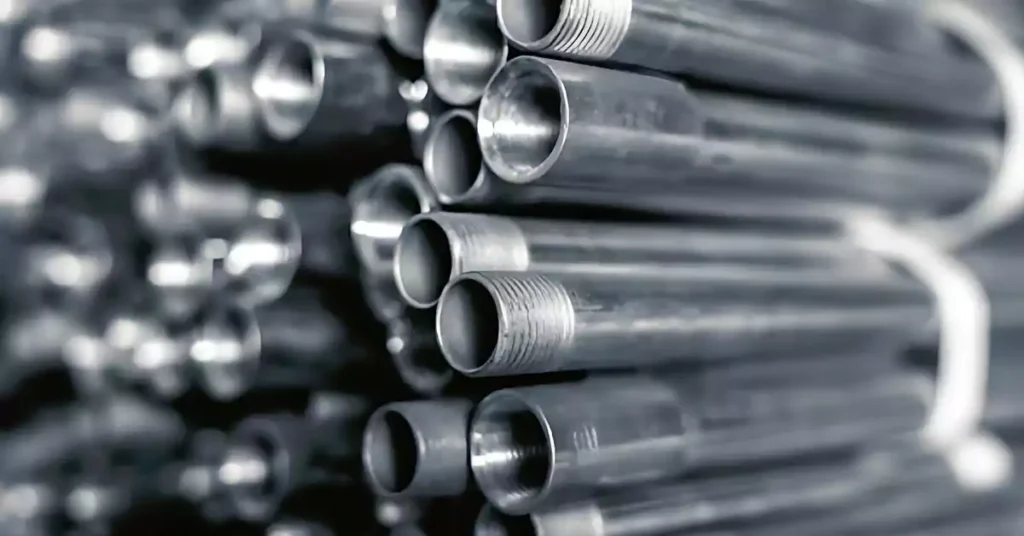
Renewable energy systems often operate in tough environments, from scorching rooftops and windy open fields to damp riverbanks. These conditions pose unique challenges for conduit installations that protect and route critical electrical wiring. Understanding common issues, and how to solve them is key to long-lasting, code-compliant, and low-maintenance systems.
1. Water Ingress and Corrosion
Moisture is one of the most persistent threats to conduit systems. It can enter through loose fittings, cracks, condensation, or flooding, leading to rust, corrosion, and eventual system failure. This is especially problematic in outdoor and coastal installations.
2. Mechanical Damage
Conduits in renewable systems are vulnerable to physical impacts—from wildlife, moving equipment, foot traffic, or wind-induced vibration. Over time, this can lead to crushing, cracking, or abrasion of the conduit or the cables inside.
3. Thermal Expansion and UV Exposure
Direct sunlight and changing temperatures cause conduit materials to expand and contract. Without room to move, this can crack conduits or stress connections. UV exposure also causes material degradation over time, especially for plastic conduits.
4. Grounding and Bonding Risks
Improper grounding can result in electrical shock hazards, power surges, and system damage. In renewable systems, proper bonding of metallic parts and grounding paths is critical to ensure personnel safety and equipment protection.
5. Circuit Separation and Overcrowding
Renewable systems often require the routing of AC, DC, and communication cables—each with different voltage levels and signal sensitivities. Improper layout or crowding in conduit runs can cause interference, overheating, or code violations.
Ledes’ Solutions to These Challenges
Ledes provides a complete range of conduit and accessory systems designed specifically to withstand the challenges of renewable energy environments. Here’s how Ledes addresses each problem:
Waterproof and Corrosion-Resistant Protection
IP-rated conduit systems and fittings with watertight seals prevent moisture from entering.
Corrosion-resistant materials, including PVC-coated metal or fiberglass, ensure longevity in wet or coastal zones.
Strong, Impact-Resistant Conduits
Ledes offers heavy-duty rigid conduit and corrugated conduits made from high-strength PVC, metal, or fiberglass.
These products resist crushing, impact, and wear from rodents or physical stress.
Secure mounting hardware and proper spacers are available to support long runs and prevent sagging.
Thermal Expansion Solutions
Ledes conduits are tested to withstand extreme temperature changes.
Expansion joints, loops, and offsets allow conduit movement without damaging connections.
Ledes products are made from UV-stabilized materials to avoid cracking or discoloration from sun exposure.
About Grounding and Bonding Support
Ledes provides non-metallic systems without the need of grounding, and come with dedicated accessories to maintain system integrity. But the conductors inside still need if grounding is required by code for the electrical system.
Smart Routing for Multiple Circuit Types
Ledes provides conduits in multiple sizes and configurations to enable separation of AC, DC, and data lines.
Cable management accessories help reduce crowding and make maintenance easier.
Fire-rated and low-smoke halogen-free (LSZH) options are available for safer installations in enclosed or public areas.
Conclusion
As the world accelerates toward clean and renewable energy, electrical conduit systems play a critical yet often overlooked role in ensuring the safety, reliability, and longevity of solar, wind, and hydrokinetic power installations. From protecting wiring in harsh outdoor environments to meeting the evolving demands of national and international electrical codes, conduit solutions must be selected with care and foresight.
In this article, we explored the unique requirements of renewable energy systems, reviewed the major conduit types used in the industry, and examined how leading standards—NEC (USA), CEC (Canada), and AS/NZS (Australia/New Zealand)—shape conduit installation practices. These codes provide vital guidance on grounding, circuit separation, material selection, environmental protection, and long-term system performance.
Whether you’re working on a rooftop solar project, an offshore wind farm, or a river-powered hydrokinetic system, the right conduit choice is more than a detail—it’s a foundation for a safe and future-ready renewable energy infrastructure.
Frequently Asked Questions (FAQs)
Why is electrical conduit so crucial for renewable energy systems?
Electrical conduit protects wiring from environmental hazards such as moisture, UV rays, heat, and mechanical damage. In renewable energy systems—especially solar, wind, and hydro installations—exposed locations, long wire runs, and higher voltages make proper conduit installation essential for safety, code compliance, and long-term reliability.
What is the difference between electrical grounding and bonding, and why are they important?
Grounding connects electrical systems to the earth to safely dissipate fault currents. Bonding connects all metal parts to maintain equal potential and eliminate dangerous voltage differences. Both are essential in renewable energy systems to protect people and equipment, and are mandated by electrical codes globally.
Why is it important to segregate AC and DC circuits in renewable energy systems?
Segregating AC and DC circuits helps prevent electrical interference, reduces the risk of faults, and simplifies maintenance and troubleshooting. Code regulations in many regions, such as NEC and AS/NZS 3000, require physical separation between AC and DC wiring, often via different conduits, trays, or enclosures—to ensure safe operation and minimize fire risks.
Can I use PVC conduit for wind power systems?
Yes, PVC conduit can be used in wind power systems, especially for underground wiring or tower base applications. However, it must be UV-resistant and mechanically strong if exposed. In harsher environments or for high-voltage runs, rigid metal or fiberglass conduit may be preferred.
Is conduit required for all solar and wind wiring?
Not always—but it is highly recommended or required by code for most applications. Exposed wiring must be protected in conduit, especially on rooftops or outdoor installations. Conduit use also enhances system longevity, aesthetics, and safety, and helps meet grounding, segregation, and weatherproofing requirements.
What type of electrical conduit is best for solar PV systems?
Rigid PVC conduit is widely used in solar PV systems due to its UV resistance, corrosion resistance, and cost-effectiveness. However, in areas exposed to direct sunlight or mechanical stress, metallic conduit (like EMT or aluminum) may be preferred for added durability and grounding capabilities.
What conduit is used in hydrokinetic (water-based) power systems?
Hydrokinetic systems often require heavy-duty, corrosion-resistant conduits, especially in submerged or damp conditions. Liquid-tight flexible nonmetallic conduit (LFNC) or HDPE conduit is commonly used for underwater applications, while PVC may be used for dry, land-based portions. All conduit types must ensure watertight protection and mechanical robustness.
Does the NEC require special conduit types for renewable energy installations?
Yes, while the NEC doesn’t always mandate a specific material, it does require that conduit used in renewable energy systems meet the environmental, mechanical, and voltage requirements of the installation. For example, Article 690 (Solar PV) and Article 694 (Wind Systems) emphasize proper wiring methods, protection from physical damage, and UV exposure, which often guides the choice of metallic or sunlight-resistant nonmetallic conduit.
How does the CEC differ from the NEC in conduit requirements for solar?
The CEC (Canadian Electrical Code) and NEC (National Electrical Code) are broadly aligned in intent, but differ in conduit sizing tables, and approval requirements. For instance:
CEC has stricter requirements for cold weather performance and mechanical protection.
CEC often favors armored cables or rigid metallic conduit for roof-mounted PV systems.
Material approvals (CSA in Canada vs. UL in the U.S.) differ.
Can I use flexible conduit for renewable energy applications?
Yes. Liquid-tight flexible metal conduit (LFMC) or nonmetallic flexible conduit is often used to connect moving parts (like solar tracker systems or junction boxes) or for vibration resistance in wind turbines. Flexible conduit must be rated for UV, temperature, and water resistance if used outdoors.
Do conduit materials need to be UV resistant for solar installations?
Absolutely. Solar installations are exposed to intense UV radiation over many years. Non-UV-resistant conduit will degrade, crack, or become brittle, leading to failure. UV-resistant PVC, LSZH, or metallic conduits with protective coatings are recommended for outdoor solar applications.
What is hydrokinetic energy and how does it work?
Hydrokinetic energy refers to electricity generated from the movement of water without the need for dams. Systems capture energy from tidal currents, rivers, or ocean waves using underwater turbines or floating generators. The kinetic energy of flowing water spins turbines, which convert motion into electricity.
How does a solar PV system work?
Solar PV (photovoltaic) systems convert sunlight into electricity using solar panels. The DC power generated is sent through an inverter that converts it into AC electricity for household or grid use. Conduits carry and protect the electrical wiring throughout the system—from panels to inverter to distribution boards.
Why is renewable energy better for the environment?
Renewable energy sources like solar, wind, and hydro produce little to no greenhouse gas emissions, reduce reliance on fossil fuels, and minimize air and water pollution. They also help combat climate change and can be sustainably replenished, making them environmentally and economically advantageous in the long run.
References:




